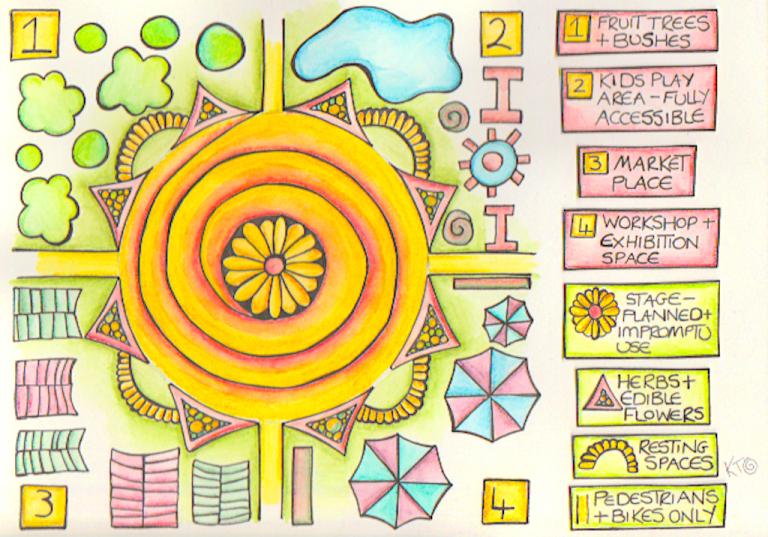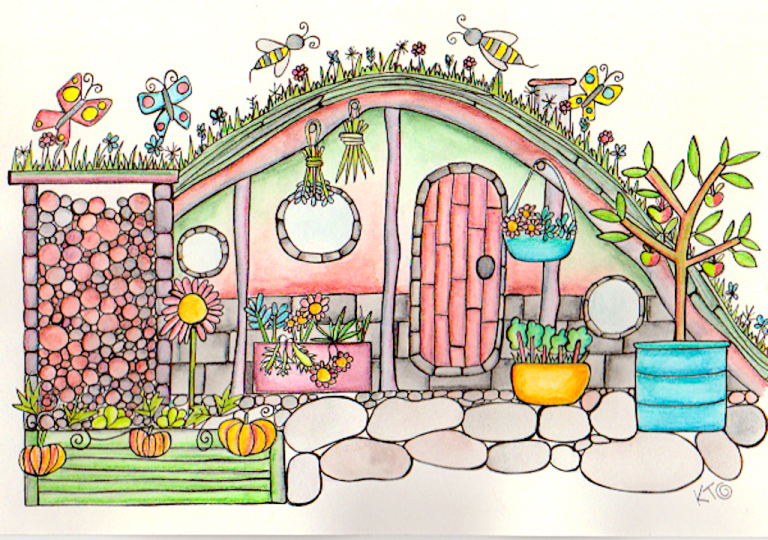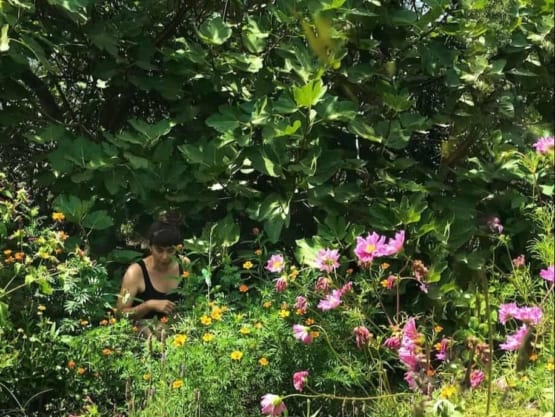
What is “permaculture activism” and why should you do it?
As a permaculture activist, you are concerned with the environment and its future. You seek to create more sustainable societies and ways of living, and focus on creating resilient communities and regenerative systems.
You also aim to empower individuals and groups to become active participants in social change.
That’s why, as you create your ecological design for your own home and garden, it makes sense to learn about how to be a community events organizer. This can be as simple as hosting a potluck at your house, as complicated as putting together a multi-day annual festival, or anywhere in-between.
Why should this be part of your homestead design?
A list of great reasons could go on for ages, but the most important one is because, with the simple act of dedicating small amounts of time and space to facilitating the flow of resources in your community, you can simultaneously close the loop on all three of our permaculture ethics.
- Earth Care: community events can put to use waste resources and provide access to land and support. They can help perpetuate non-human species and build ecological resilience.
- People Care: people need community. Period.
- Third Ethic: community events can meet all versions of the third ethic. Sharing surplus, caring for the future, limiting personal consumption, and sharing fairly can all be facilitated through grassroots Permaculture Activism and Community Organizing.
A lot of magic can happen, and it all starts when one person (you!) gets the ball rolling. Look around your neighborhood for problems that need solving and/or needs that aren’t being met.
What sorts of events could you organize?

In this chapter of Food Not Lawns, How to Turn Your Yard into a Garden and Your Neighborhood into a Community you’ll find a rundown of a bunch of grassroots community projects. However, since that book was written, social media happened, so now you can do all of these events online, as well!
The only limit is your own imagination, but it does make sense to do a little research first and get a sense of what your community really needs and wants.

Permablitzes
In the permaculture community, a wide range of events can be found, such as seed swaps, workshops, convergences, and the ever-exciting permablitz. Defined on Wikibooks as “an informal gathering involving a day on which a group of at least two people come together to achieve the following:
- Create or add to edible gardens where someone lives
- Share skills related to permaculture and sustainable living
- Build community networks
- Have fun!
Permablitzes are free events, open to the public, with free workshops, shared food, where you get some exercise and have a wonderful time. To be defined as a permablitz, each event must also be preceded by a permaculture design by a qualified designer.
Most permablitz networks run on reciprocity, and in order to qualify for a permablitz you usually need to volunteer at other permablitzes first, although there may be other ways of qualifying.”
You can learn how to organize one at www.permablitz.net, and here’s a fun permablitz case study with Hannah Moloney:
Do your research!
While it’s almost always a good idea to organize a permablitz, one of the biggest mistakes organizers make is to jump right to the details of the when and where with event planning before doing research and observation. Community organizing is a design process, and if you employ your designer’s toolkit, you will have a lot more success in the long run.
Here are eight important questions every event organizer needs to ask, before deciding the date, location, and name of an event:
- Does this event make sense for your community? Are you sure it’s needed? What is the goal? What are the benefits? Articulate these clearly in all of your promo materials.
- Who else is organizing events like this? Meet, connect, make sure you’re complimenting and building upon, rather than competing with their work.
- Who is this event for and how will you try to make sure they can attend? How will you get the word out?
- What will be the inputs and outputs? Costs, wastes, and surpluses? Include money, donated resources, emotional labor, and as many of the obvious and not-so-obvious inputs in your budgeting. Will this be depletive or regenerative? Adjust the budget accordingly.
- What will happen during the event? Will you have speakers, ice-breaker games, vending, performances, resource exchange? Break your plan down into 15-minute segments, and don’t try to do it all. Be realistic.
- How will you collect feedback after the event, and what will you do with it?
- Will you work alone or with a group? How will that group be organized? Will you get paid? Will there be volunteers? How will they be compensated equitably for their time and energy?
- Who are you centering or excluding, with or without realizing it? Look at the faces of your event and make sure it’s representative of the diversity you would like to create. Make sure the venue is accessible for disabled folks and/or children, if you want them to come.
Regarding accessibility, and making sure somebody on the organizing team is focused on it, our own #freepermaculture course artist Kt Shepherd has some ideas, which she presents in her guidelines for Permaculture event information and marketing.
Now, considering all of that information: where and when will you host the event, what will you call it, and how will you get the word out?

Want to learn more about this and other topics related to permaculture, sustainability, and whole-systems design?
We offer a range of FREE (donations optional) online courses!
Relevant Links and Resources
The Permaculture Action Network is focused on empowering communities and permaculture organizations to use permaculture tools to provoke positive change. Check out their stuff, it’s great!

Here’s a detailed, downloadable handbook for organizing a local farmer’s market

Seed swaps are one of the funnest things in the world to organize!

A few more good videos on the topic:



